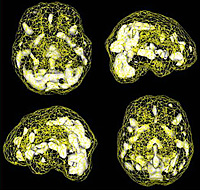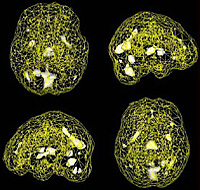A PIECE OF THE PUZZLE FOR READING PROBLEMS, LEARNING DIFFICULTIES, AD/HD, DYSLEXIA, HEADACHES AND OTHER PHYSICAL SYMPTOMS THROUGH THE USE OF COLOUR
The Irlen Method has helped children and adults worldwide become successful rather than continue to experience enormous difficulties. This method has received international acclaim and Helen Irlen�s work has been included in professional journals, textbooks, National Geographic, TV shows such as 60 Minutes and the Alan Jones radio program in 2005. Good Morning America, ABC World News With Peter Jennings and NBC News has been the subject of many news broadcasts by the BBC and news shows in Ireland , Hong Kong , Netherlands , New Zealand and Australia including their 60 Minutes.
The Irlen Method provides a unique service for children and adults with reading, attention, and learning difficulties. But even good readers and gifted students can be helped. At least two million Americans are identified as learning disabled. Many more are labelled as “not trying hard enough” at school for a variety of reasons, including lack of motivation, attention deficit disorder, reading problems, or discipline problems.
The Irlen Method expands upon current standardized testing by exploring a wide range of reasons for poor school and work performance. The standard tests frequently fail to identify all the reasons for problems because they look at only part of the puzzle.
Irlen Syndrome, also known as, Scotopic Sensitivity Syndrome (SSS) is a type of visual perceptual problem. It is not an optical problem. It is a problem with how the nervous system encodes and decodes visual information. Academic and work performance, behaviour, attention, ability to sit still and concentration can be affected. Individuals with this problem see the printed page differently, although they may not realize that they do. Having Irlen Syndrome keeps many people from reading effectively, efficiently, or even at all. Until now, it has baffled educators and medical scientists because it is undetected by standard visual, educational and medical tests.
Individuals with Irlen Syndrome see the printed page differently from those with normal vision and must constantly adapt to distortions appearing on the printed page. They may be slow or inefficient readers, exhibit poor comprehension, suffer from strain, fatigue or headaches. It can affect their attention-span, energy-level, motivation, handwriting, depth-perception and, ultimately, self-esteem. Irlen syndrome sufferers may be labelled as underachievers with behavioural, attitudinal, or motivational problems. It is a complex and variable condition sometimes found to co-exist with other learning disabilities.


